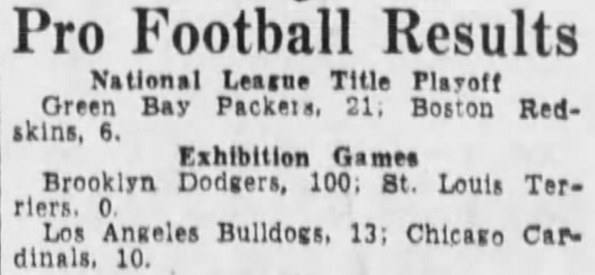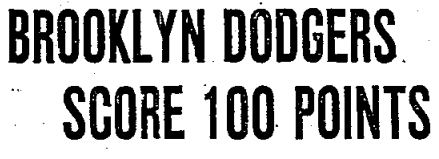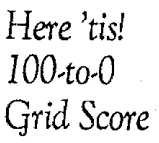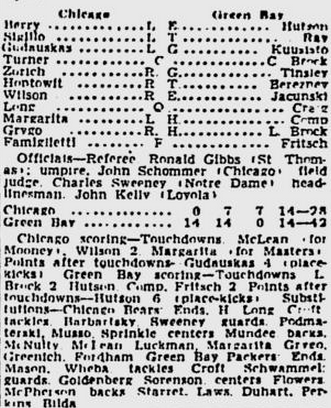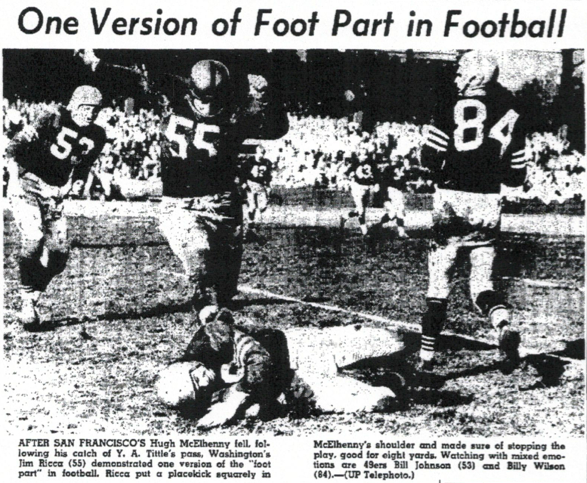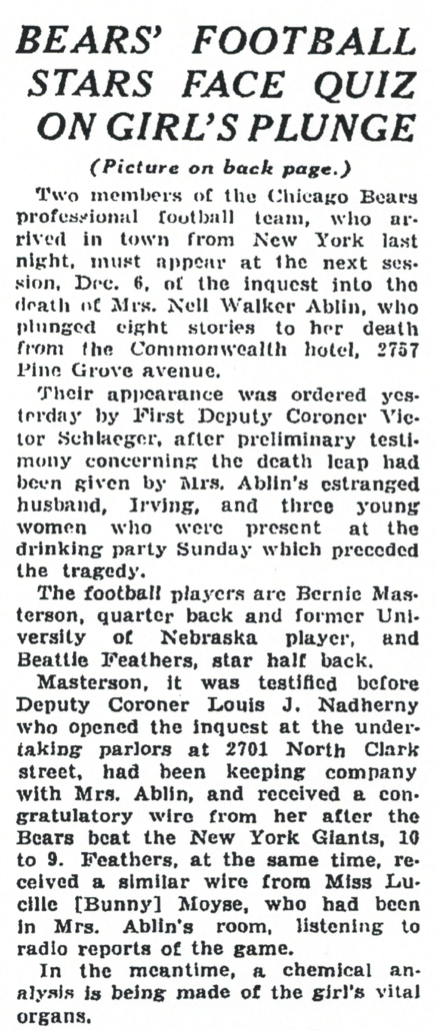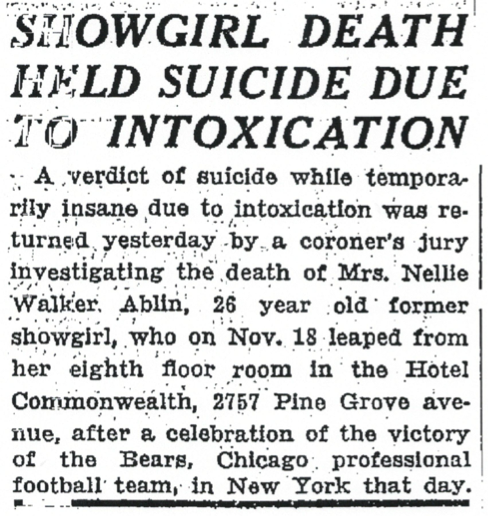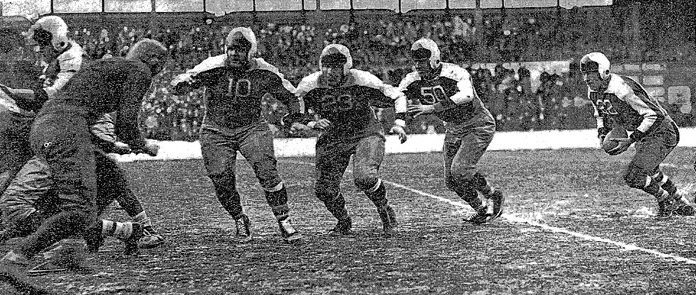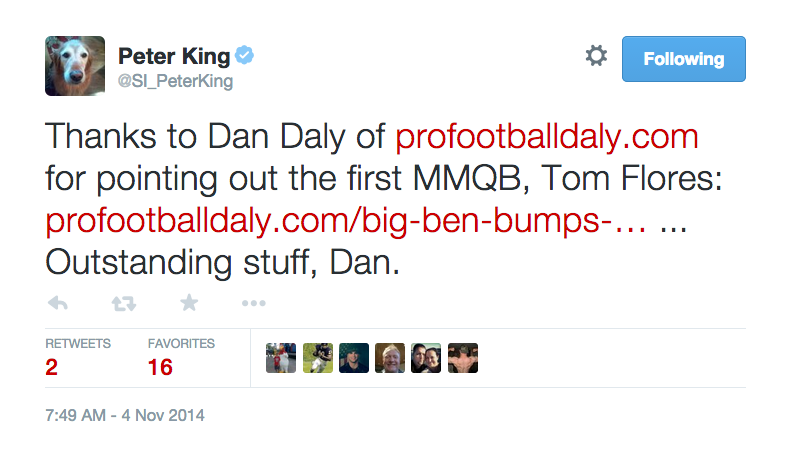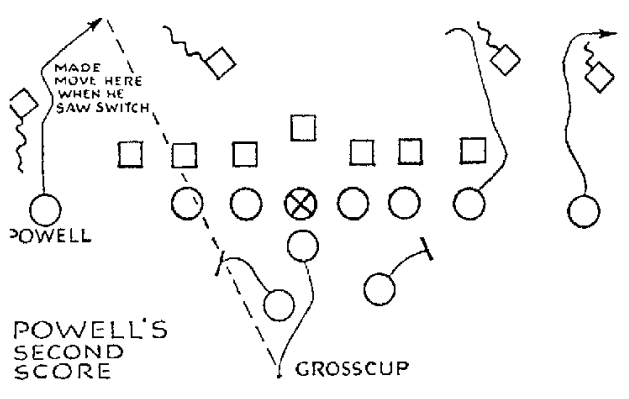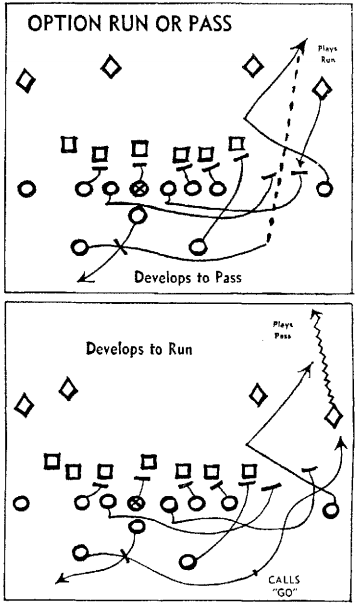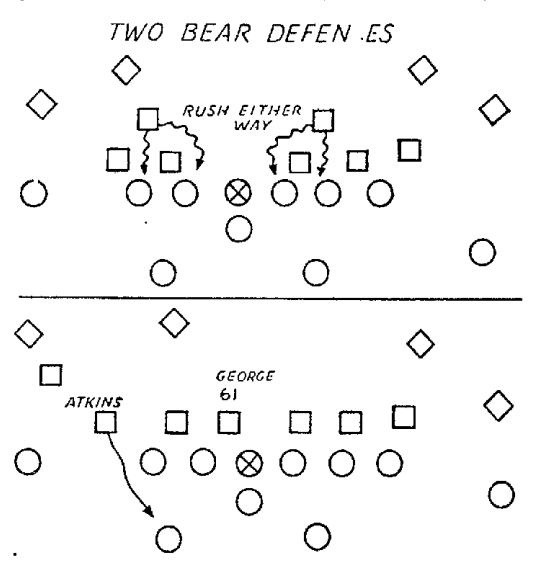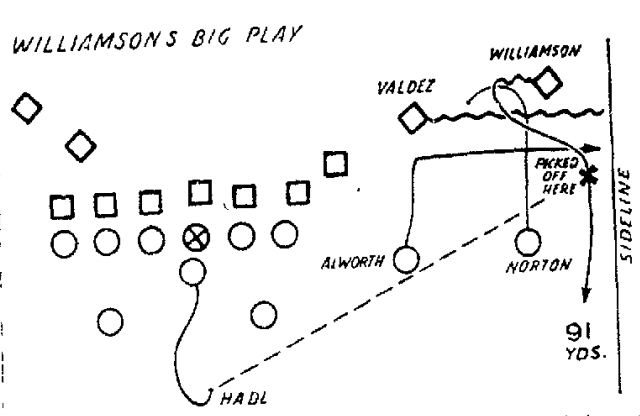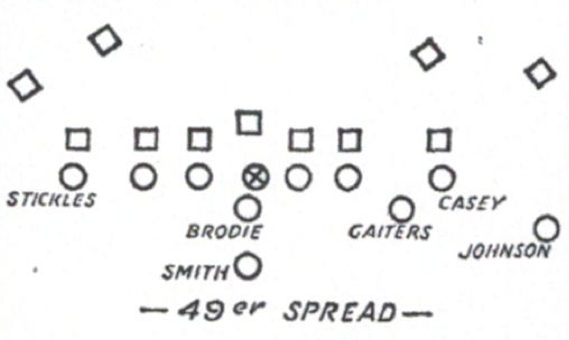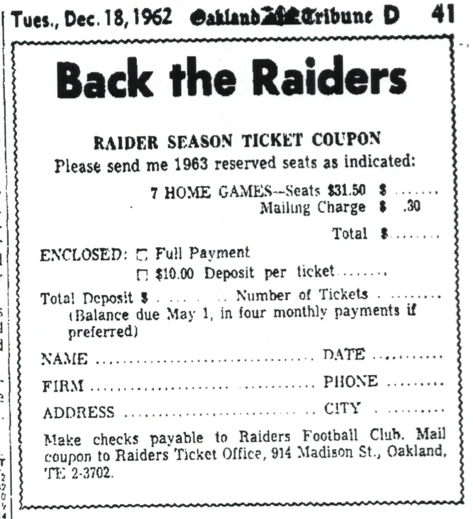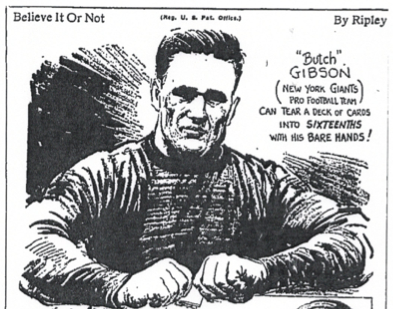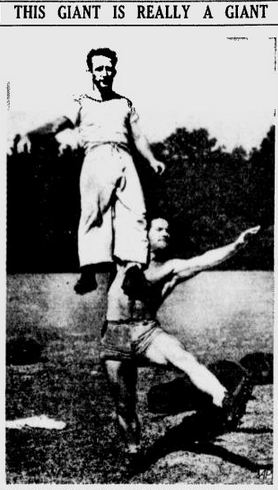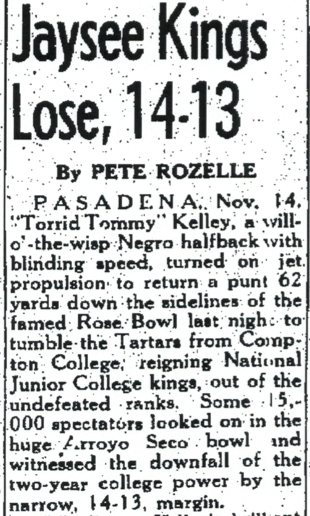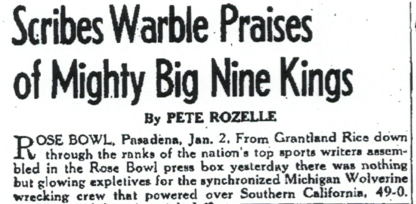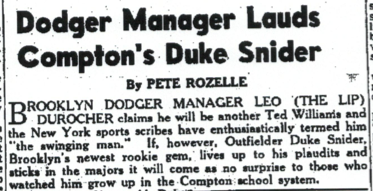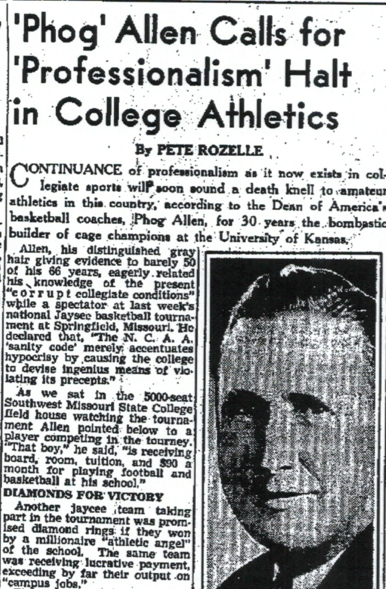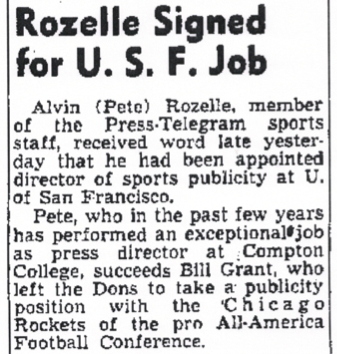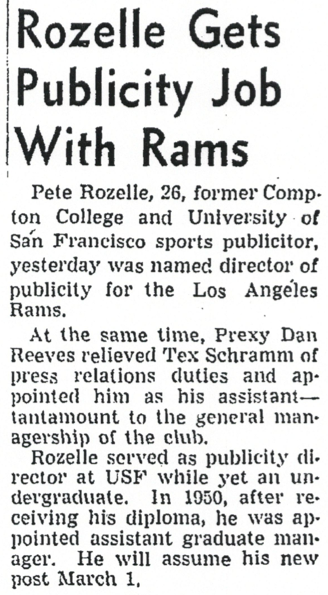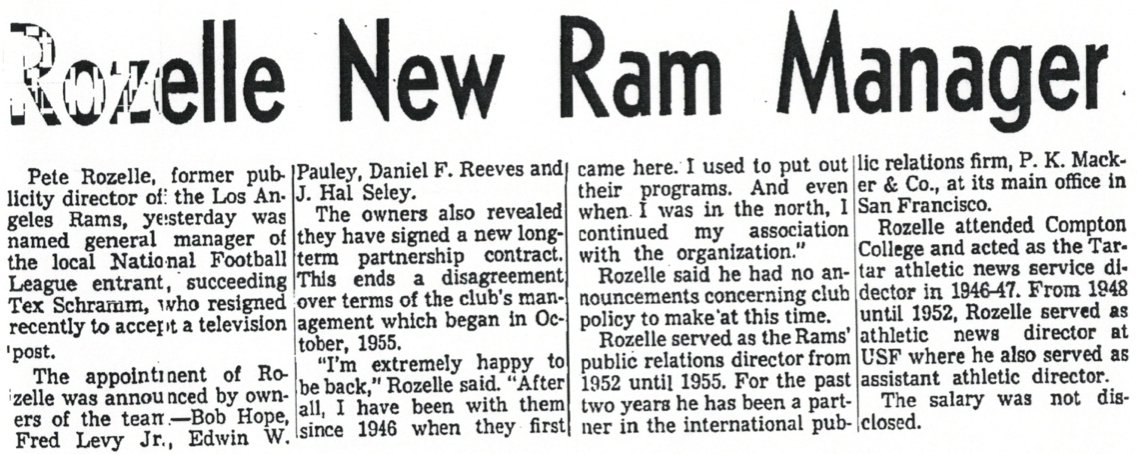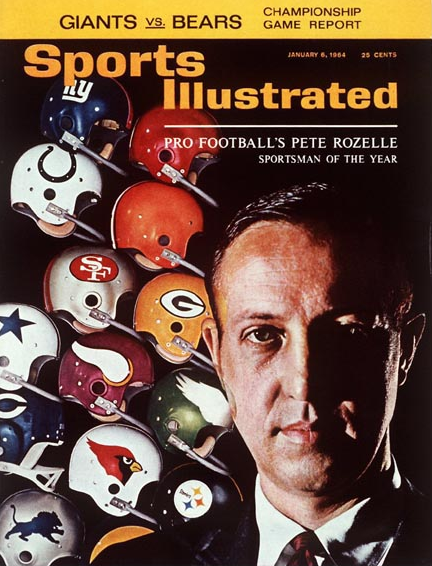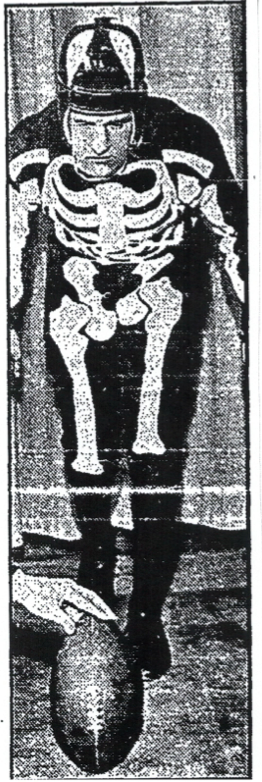Even if you’re not an NFL history buff, you’re probably familiar with the score of the 1940 title game: 73-0 (the Bears nipping the Redskins). Well, I’ve got a blowout that’s even bigger than that. It just didn’t happen in a league game. It happened during a postseason barnstorming tour in December 1936, when the Brooklyn Dodgers “shellacked” the semipro St. Louis Terriers, 100-0.
Such tours were fairly common in those Depression times. Before teams broke up for the season, they’d squeeze in a few more games — and paydays — against non-league clubs in warmer parts of the country. They didn’t always win them, either. The same afternoon the Dodgers trounced the Terriers in Wichita, the Chicago Cardinals lost to the Pacific Coast League’s Los Angeles Bulldogs in L.A., 13-10.
You know what else was played that day? The NFL championship game between the Packers and Redskins. Here’s your scoreboard for Dec. 13, 1936:
The ’36 Dodgers weren’t very good at all. They finished 3-8-1 and scored a grand total of 92 points. In other words, they scored more points in 60 minutes against the St. Louis Terriers than in 12 regular-season games.
Fortunately for them, their competition in Wichita was a scraggly bunch. In fact, it came out afterward that their opponents bore only a slight resemblance to the real St. Louis Terriers. One of the Terriers’ promoters, Jack Lally, told The Associated Press, “The scheduling of a National [Football] League team was ‘football suicide’ and a financially unsound idea this late in the season. And reports a St. Louis team was beaten so badly may hurt the sport here next year. Our objection is that we were not considered when plans for the game at Wichita were being drawn up — and Yates [James Yates, the promoter] represents only one-third of the team.”
According to the AP, “only three regular Terrier players were in the lineup.” Yates did supplement the St. Louis roster, though, with All-American back Ozzie Simmons, who had just finished his college career at Iowa. Simmons never played in the NFL because the league wasn’t hiring blacks then, but he managed to make his presence felt even in a 100-0 loss. He “turned in one run of 50 yards and completed one pass before leaving the game in the third period,” the wire service reported.
A sampling of the headlines that appeared over The 100-0 Story (in case you’re curious):
The New York Times:
The Milwaukee Journal:
And finally, The San Antonio Light:
Now that’s the spirit. At least the Light grasped the utter ridiculousness of the game — one that was certainly worth an exclamation point or two. It’s also the only paper I’ve come across that provided much detail (courtesy of the wires):
Running wild, the Dodgers rang up 21 points in the first quarter, 12 in the second, 34 in the third and 33 in the fourth. The St. Louisans, led by the dark flash, Oze Simmons of the University of Iowa, were completely helpless, cowed and pulverized.
The 15 Brooklyn touchdowns were made by [Jeff] Barrett (5), [Joe] Maniaci (4), [Tony] Kaska (2), [John] Yezerski (1) and [Paul] Riblett (1). The Dodgers gained 274 yards by rushing and 300 on passes. In the last period, they bewildered the fans – and the Terriers more so – with seven laterals on one play.
Seven laterals on one play. Clearly, the Dodgers were enjoying themselves after the long slog of the NFL season. Yezerski, after all, was a tackle. (Wonder if he was the recipient of The Seventh Lateral — or if they threw him a touchdown pass on a tackle-eligible play.) Barrett and Riblett, for that matter, were ends. Which raises the question: Did Barrett actually have five TD receptions? Because that would match the NFL record shared by Jerry Rice, Kellen Winslow Sr. and Bob Shaw.
The game, by the way, attracted a crowd of 4,000. It figures out to 40 people per point, for those of you scoring at home.

